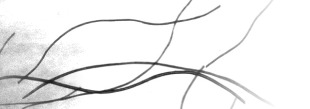Report Workshop Montréal 2012
The workshop "Measurement of the morphological structure of
fibres and particles" was held in Montréal on April 12-13, 2012. (Program of the workshop)
April 12, 2012:
Morning:
In the morning there was a training session for sample preparation and measurement with Fibreshape. An important trick for sample preparation is the use of sieves to filter out fine dust in case one is only interested in the fineness or width of fibers. This also has the effect of cleaning the sample from possible sources which bias the results towards bigger widths.
Also, with the help of sieving, an explanation was given for the meaning of size-weighted histograms. In case of image analysis, weighted histograms show up as area or length-weighted.
A key insight in the morning session was that length-weighted histrograms are required particularly for width measurements of long fibers. The reason is that the measurement method (Fibreshape) alters the number of objects (imaginatively cuts the long fibers into smaller segments) and hence renders a number-weighted histogram useless.
Afternoon:
The afternoon session was devoted to sharing experiences of using Fibreshape [b] or future projects in which Fibreshape is to be used [c].
One question that arose was how the cohesion of a (polypropylene) fiber with another (natural) fiber can be quantified. Would image analysis be an option, how can the numbers be correlated?
Evening:
The evening session was devoted to the principles of image analysis and to nature as a guide for solving hard algorithmic problems related to pattern recognition [d,e]. The calibration methodologies were also discussed, in particular with respect to a future ASTM standard [f]. The existing calibration standards [1] for particles and [2] for the width (fineness) of wool fibers are of interest in that respect.
April 13, 2012:
Morning:
The morning session started with a tour of the labs of NRC Montréal. Talks on the characterization of fibers and particles followed.
Some of the workshop participants of the second day (from left to right): Denis Rho, PhD (NRC Montréal, Canada), Byron James (Alberta Innovates Future Technologies, Edmonton, Canada), Prof. Christopher A. Brown, PhD (Worchester Polytechnic Institute, USA), Dominique Desgagnés (NRC Boucherville, Canada), Meigun Wu (NRC Montréal, Canada), Yali Xu (NRC Montréal, Canada)
The talk of Christopher A. Brown [g] was interesting in relation to the fact that Fibreshape or Powdershape focus on collecting statistics about the size or shape of many objects. This talk focused on the characterization of a single fiber or particle, in particular on its surface. Many properties in manufacturing and engineering relate to properties of the surface on different scales. Maybe the question that arose in Day 1 afternoon session, “correlate cohesion of fiber with another fiber” is a question that can only be answered on the level of surface properties in the range of nano to micrometer. These characterization techniques then would be a natural extension of the characterization properties provided by Fibreshape.
The last talk of the workshop was again given by Hubert Schmid [h] and concentrated on appropriate sample preparation, calibration with adequate standards and the use of measurement parameters. The day concluded with a very interesting final discussion about the requirements for numerically robust and reproducible measurements in image analysis and how Fibreshape achieves this. Fibreshape's measurement parameters (output values) are exclusively computed based on integrals (such as area and perimeter in grain size or rectangle model width and height). Any other parameters are only used to select the objects of interest (filter according to shape, size or other optical properties) but not as a measurement result.
Talks:
[a] Hubert Schmid, PhD, "Geometrical evaluation of the structure of plant products with Fibreshape and Powdershape", IST Ltd, abstract
[b] Denis Rho, PhD, "Fibreshape utilization for size distribution of flax diameters", NRC Montréal,
[c] Salim
Derdouri, "Length reduction of fibers in twin-screw extrusion of long fiber reinforced thermoplastics", abstract
[d] Georg Schmid, “Image analysis in the brain”, abstract
[e] Hubert Schmid, PhD, “Image analysis of fibers and particles as with the human eye”, IST Ltd.
[f] All participants (discussion): “ASTM standard for cotton fineness measurements by image analysis”
[g] Prof. Christopher A. Brown, PhD, “Curvature calculations on abrasive particles”, WPI
[h] Hubert Schmid, PhD, "Basics of powder and fiber characterization and challenges of image
data processing with Powdershape and Fibreshape", IST Ltd.
References:
[1] ISO 13322-1 Particle size analysis: Image analysis methods.
[2] IWTO wool standard samples (of interest for fiber width calibration), see H.G. Schmid, J. Müssig (2002).


